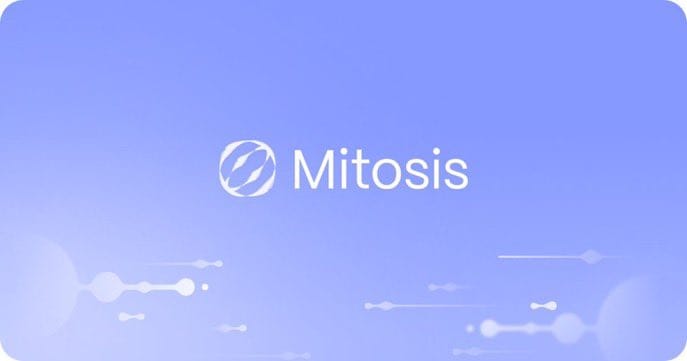Citrea: Pioneering ZK Rollups for Bitcoin Scalability

Bitcoin, while being the most secure and decentralized blockchain, has long faced challenges around scalability and programmability. Traditional Layer 2 (L2) solutions, like sidechains or payment channels, often compromise on trust assumptions or fail to fully inherit Bitcoin’s robust security model. Enter Citrea, the first zero-knowledge (ZK) rollup built specifically for Bitcoin. By integrating ZK proofs with BitVM, Citrea introduces a scalable and programmable execution layer without compromising Bitcoin’s fundamental principles of decentralization, security, and censorship resistance.
In this article, we’ll explore how Citrea uses Bitcoin as both its data availability (DA) and settlement layer, its innovative ZK-rollup architecture, and the role of BitVM-based bridging. We’ll also look ahead at Citrea’s roadmap and its vision for enabling a new wave of Bitcoin-powered applications.
Bitcoin as the Foundation: Data Availability & Settlement
Unlike other L2 solutions that rely on external validators or separate consensus mechanisms, Citrea builds directly on Bitcoin. It leverages Bitcoin as the only source of truth, recording compressed state differences (state diffs) on the Bitcoin blockchain instead of raw transaction data.
- Data Availability (DA): Every state change in Citrea is anchored on Bitcoin. Full nodes can reconstruct Citrea’s state by reading these state diffs, ensuring that Citrea’s integrity is tied to Bitcoin’s chain.
- Settlement: Using a BitVM-based bridge, Citrea settles transactions optimistically on Bitcoin. This is the first time Bitcoin itself is used as a settlement layer for a fully programmable environment.
This deep integration ensures Citrea inherits Bitcoin’s validity, liveness, re-org resistance, and censorship resistance.
ZK Rollup Architecture: Scaling with Verifiable Computation
Citrea’s scalability comes from its ZK-rollup design, where transaction batches are processed off-chain and proven correct using zero-knowledge proofs.
- Proof Generation: Citrea employs RISC Zero’s STARK prover, later compressed into Groth16 SNARKs for efficient on-chain verification.
- Batch & State Differences: Instead of publishing entire transactions, Citrea only records the delta (changes in balances, nonces, and storage states). This reduces costs and optimizes Bitcoin’s limited blockspace.
- Prover Role: The Prover aggregates Citrea blocks, generates proofs, and inscribes compressed data (using techniques like Brotli compression) to Bitcoin.
This design allows anyone to verify state transitions without redoing the computations, ensuring scalability without sacrificing trustlessness.
BitVM and Clementine Bridge: Trust-Minimized BTC Transfers
Bridging BTC into Citrea is enabled by Clementine, a BitVM-powered two-way peg mechanism.
- Optimistic Verification: ZK proofs from Citrea are optimistically verified on Bitcoin, with fraud proofs available to challenge invalid claims.
- Clementine v1: Built on BitVM2, it uses roles like Signers (N-of-N multisig for peg-ins), Watchtowers (monitoring fraud), and Operators (covering withdrawals).
- Clementine v2 (Research Phase): Future upgrades will leverage Garbled Circuits and Transfer of Ownership Protocol (TOOP) to eliminate collateral and reduce costs, making bridging fully decentralized and efficient.
By tying the bridge’s security to Bitcoin itself, Citrea maintains a 1-of-N trust assumption — as long as one verifier is honest, funds remain safe.
EVM Compatibility and Bitcoin Applications (₿apps)
Citrea supports a Type 2 zkEVM, meaning Ethereum-compatible smart contracts can run on Bitcoin with minimal modifications.
- cBTC as Gas: BTC itself serves as the native token ($cBTC) for transactions and gas fees.
- Fast Blocks & Fees: With 2-second block times and 10M gas limits (upgraded via Tangerine), Citrea enables high-throughput dApps while inscribing state diffs on Bitcoin.
- New Application Category: Citrea introduces ₿apps — decentralized applications that harness Bitcoin’s security and liquidity, transforming Bitcoin from a passive asset into a programmable and composable ecosystem.
Conclusion
Citrea represents a major leap in Bitcoin scalability by combining ZK-rollups, EVM compatibility, and BitVM bridging. By leveraging Bitcoin as its data availability and settlement layer, Citrea ensures that security remains uncompromised while unlocking a new wave of programmable Bitcoin applications.
Key Takeaways:
- First ZK Rollup on Bitcoin: Citrea sets a precedent for Bitcoin-centric scaling solutions.
- Seamless EVM Integration: Developers can build Ethereum-style dApps directly on Bitcoin.
- Censorship Resistance: Features like Force Transactions ensure Bitcoin’s neutrality is preserved.
- Road to Mainnet: With testnet milestones (Kumquat, Tangerine) and ongoing audits, Citrea’s mainnet launch is imminent.
Looking Ahead: Could Citrea’s model become the blueprint for all future Bitcoin L2s? As Clementine v2 and decentralized sequencers evolve, Citrea may redefine what’s possible on Bitcoin — turning it into not just the world’s most secure store of value, but also its most trustless application platform.


Comments ()